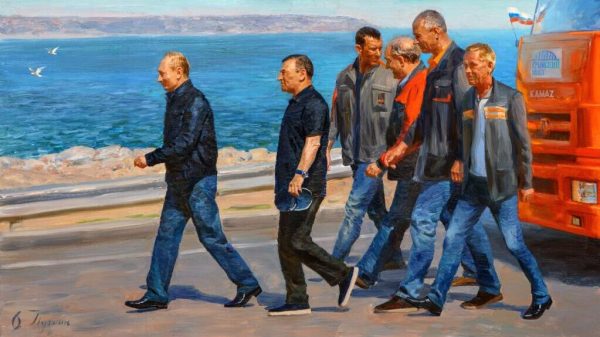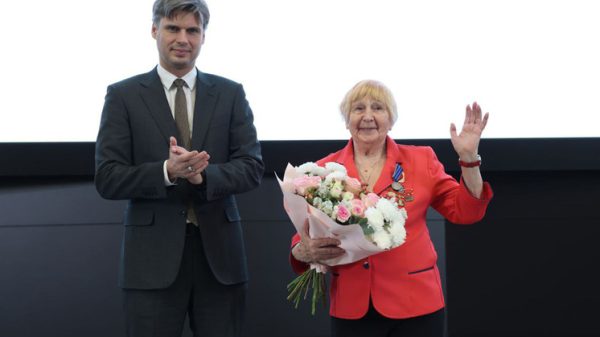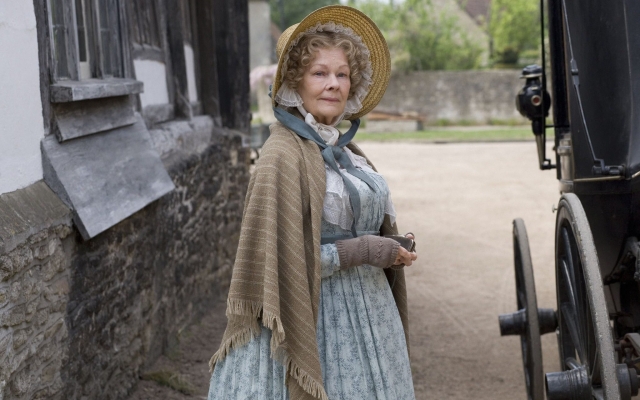Over the past quarter century, Murders in Midsomer has become one of the most watched programs in the UK. The Sunday edition drew an estimated 2.5 million viewers — no small feat in our fragmented digital age — and in America, the show continues to thrive thanks to Acorn TV's import channel. That's pretty impressive for a show that looks like it was created in the late 1980s.
We certainly expect Americans to relish such stupid old stuff. (And this is really stupid: death by hard-boiled egg is my favorite example of a gruesome end.) Our friends across the Atlantic treat The Crown as if it were history and Downton Abbey as high art. Yet when it comes to the Midsomer murders, we Britons are equally complicit in the myth of a rural England that never really existed. And we have been doing this for generations.
The English pastoral as a concept dates back at least to the 16th century to Alexander Barclay's Elogs and then to Edmund Spenser's Shepherds' Calendar. (Note the deliberately archaic spelling: artistic allusions to the countryside were never intended to look ahead.) revolutions were looming over rural England.
We like to think of the countryside as a refuge. How many of us city dwellers regularly dream of a small piece of land where we could raise chickens and grow beans? The English pastoral is the forerunner of all such middle age fantasies, and from time to time literature gives us country life as a kind of balm. In J. L. Carr's 1980 historical novel A Month in the Country, a damaged World War I veteran escapes painful memories of the trenches by seeking refuge in the village church, where he discovers a medieval wall painting.
But in Britain, our relationship to the countryside is also linked to a craving for order that borders on obsessive-compulsive. This becomes particularly evident in the way artists and authors have portrayed the village over the past 200 years, and it can still be felt in Midsomer and many other detective novels, from Miss Marple to The Murders of Forty. We don't mind the havoc caused by a bloodied corpse on the croquet lawn: eventually it will be obediently swept away and the idyll will continue to flourish. «/>Quarrels, platitudes and conservatism: Judi Dench as Miss Mattie Jenkins at Cranford Photo: BBC/Nick Briggs
The village murder mystery also highlights Britain's social hierarchy, dating back to 19th-century novels by Jane Austen and Elizabeth Gaskell. I don't remember foul play in Mansfield Park or Emma, but I do remember a hierarchy bordering on the psychopathic. At Gaskell, we love Cranford ladies like Miss Matty and Miss Deborah for their petty quarrels, their banality and, yes, their conservatism. As a reader, when an uninvited guest arrives in a village, you want them to be quickly banished back to where they came from.
Another great 19th-century writer, Thomas Hardy, sought to bring a harsher reality to rural life by giving us heroes and heroines who deviated from social norms and were punished for it. Tess, Jude, Bathsheba, they are all great romantic characters that will grab you, but their passions are invariably tempered by village elders who denounce sex offenders and misfits.
An elephant in a meadow, when it comes to portraying rural life, is poverty that Hardy certainly didn't shy away from (as anyone who has read this notoriously terrifying passage from Jude the Unknown will attest). However, from time to time there is a bucolic lull that seems out of character for the daily routine. While Hardy gives us emotional darkness, the everyday surface is lighter.
As a nation, we seem to be particularly inclined to the idea that rural poverty is picturesque. One of the best-selling works of literature of the 20th century, Laurie Lee's Cider with Rosie (1959), tells us about childhood in Gloucestershire in a way that never touches the heart. As if we, as a nation, were glad to look directly at the squalor of Victorian London as described by Dickens, but did not want to believe that rural poverty also existed. jpg» />Laurie Lee recreated the bucolic image of the countryside in Cider with Rosie. Photo: Tony Evans/Timelapse Library Ltd.
Another thing we tend to impose on the village is eccentricity. An obvious example is The Cold Comfort Farm (1932) by Stella Gibbons, which itself is a parody of the idealized rural fiction of the time, but is wildly popular, as are the stories of Blandings (1915–75) by P.G. Wodehouse and Map and Map by E.F. Benson. Lucia series (1920–1939), proving that there is a tendency for rural people to misbehave (especially when they are wealthy).
Eccentricity in general can now be found in the folk horror that has dominated the British film industry in recent years, with films like Make Up (2019) and The Men (2022) following in the Wicker Man tradition ( 1973; revised 2006). Even in the most terrifying depiction of rural life ever shown on screen, one half wants to be a part of this outwardly serene village, to take part in Maypole dances and other strange rituals — until, of course, you realize that you can end it. to be the one who is sacrificed.
On the contrary, if I would recommend any book about village life, it would be Precious Perdition, Mary Webb's 1924 novel about a young woman with a cleft palate, faced difficulties in Shropshire during the Napoleonic Wars. It's ruthless and unsentimental. But you don't really want that, do you? Bring the deadly hard boiled eggs.























































Свежие комментарии